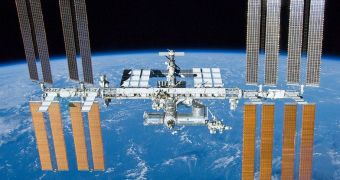Earlier today, January 3, representatives of the space agencies involved in the International Space Station (ISS) project met via teleconference to address issues related to the facility's future.
The main idea behind the meeting was to allow for officials from these organizations to decide how to use the ISS as a testbed for new technologies, while at the same time finding brand new ways of using it for applications it wasn't necessarily designed for.
Among the main objectives is minimizing operations costs, and this can only be achieved through implementing considerably more functionality in the $100 structure. Primarily, it is designed as a research laboratory.
Attendants participating at the teleconference included representatives from NASA, the Canadian Space Agency (CSA), the European Space Agency (ESA), and the Russian Federal Space Agency (RosCosmos).
Top officials from the Japanese Ministry of Education, Culture, Sports, Science and Technology (MEXT) – the government body managing the Japan Aerospace Exploration Agency (JAXA) – also tuned in from the Far East.
Together, these people form the Multilateral Coordination Board (MCB), the senior authority in all things pertaining to the construction and use of the ISS. Station managers on the Board meet which each other at regular intervals, so they can coordinate of station operations and activities.
“The MCB reaffirmed its commitment to reduce operational costs, develop an integrated transportation plan and maximize return by increasing research aboard the station while developing techniques for future exploration outside Earth's orbit,” a NASA press release explains.
“The MCB members reviewed ongoing international use of the station as a laboratory for scientific research, technology development and testing and educational activities,” the document adds.
Officials heard a report showing how 385 investigators in 29 countries benefited from more than 95 research opportunities from March to September 2010 alone.
The ISS can be used for studies in biology, biotechnology, Earth and space science, human physiology, physical science, technology development and education, among other areas.
“The partners also renewed their commitment to use station resources and observation capability to assist in humanitarian needs such as aiding in disaster recovery, tracking oil spills and monitoring climate change,” NASA announces.

 14 DAY TRIAL //
14 DAY TRIAL //